Leaves
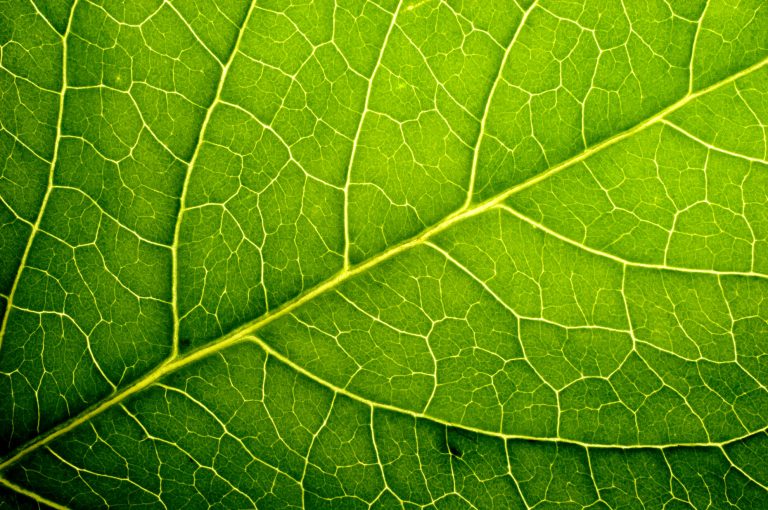
Leaves are the major photosynthetic organ of plants.
Table of Contents
Leaves are highly efficient solar energy converters. They capture light energy and through the process of photosynthesis. They are able to trap energy in the form of sugar molecules that are constructed from carbon dioxide and water (both found in the atmosphere).
All the energy required by living organisms is ultimately dependent upon photosynthesis. Leaves are able to twist on their petioles, stalks, in order to maximize sun exposure and photosynthetic activity. Leaves are covered with a thin layer of epidermal cells which permit light to the interior of the leaf, yet protect the cells from physical damage. In addition to photosynthesis, leaves are involved in other vital plant functions.
Respiration is a metabolic process that produces waste products. These products are deposited outside the plant when the leaves are shed. Leaves are also important to the movement of water absorbed by the roots and transported throughout the plant. The water that reaches the leaves mostly evaporates off into the atmosphere via transpiration.
Leaves are complex plant organs upon which life depends. We will look into all of these processes in more detail and see just how vital leaves are to sustaining plant and animal life.
Leaf Arrangements and Types
There are over 275,000 different kinds of plants and most of them can be distinguished from each other by their leaves alone. Leaves originate as primordial in the buds regardless of their ultimate size and shape. When all is said and done, leaves usually consist of a stalk, the petiole, and a flattened blade, the lamina, which has a network of veins also known as the vascular bundles.
Some leaves have a pair of appendages called stipules at the base of their petiole. In some cases, there is no petiole or stalk, and these leaves are called sessile. Deciduous trees generally lose their leaves once a year, after the growing season. Evergreens, or conifers, usually are only functional for two to seven years.
The overall arrangement of leaves with respect to the plant stem is called phyllotaxy. Leaves may be arranged in an alternate, opposite pattern if they are attached at the same node, or a whorled pattern if three or more are attached at a node. The leaf itself may be a simple leaf, which has an undivided blade; or a compound leaf, in which the blade is divided into leaflets in various ways. A pinnately compound leaf has leaflets in pairs along a central stalk—called the rachis.
A palmately compound leaf has all its leaflets attached at the same point at the end of the petiole. The leaflets of a pinnately compound leaf are sometimes subdivided into even smaller leaflets which makes a bipinnately compound leaf. The venation, or arrangement of vascular bundles, in a leaf blade or a leaflet may be either pinnate or palmate. A pinnately veined leaf has a main vein called the midrib with secondary veins branching out from it.
However, in a palmately veined leaf, several veins branch out from the base of the blade—rather than from a central midrib. Monocot plants generally have leaves with parallel venation as compared with dicots, which have branching and diverging veins. The Ginkgo tree is special in that it has no midrib or other large veins. The veins fork evenly and progressively from the base of the blade out to the opposite margin of the leaf. This arrangement is called dichotomous (branching) venation.
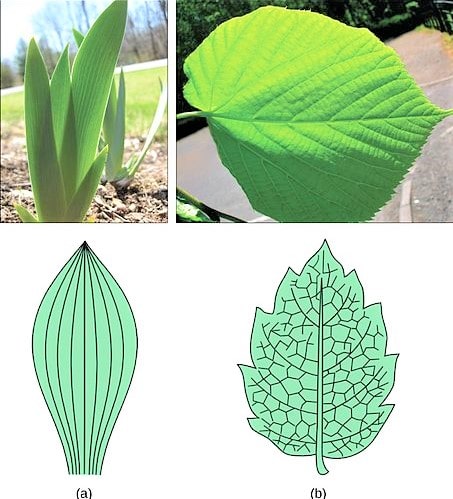
Leaf Anatomy
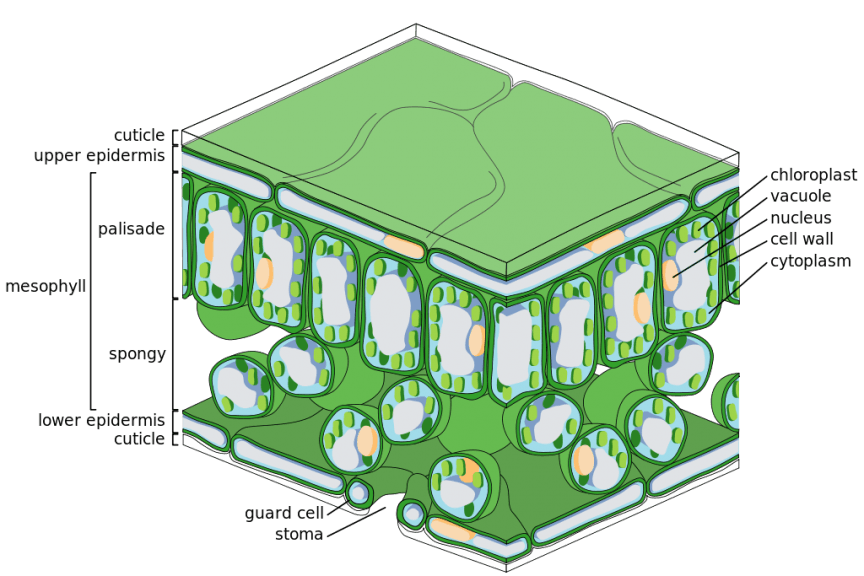
Epidermis
In cross-section, there are three major regions to see in the inside of a leaf: epidermis, mesophyll, and veins—or vascular bundles. The epidermal layer is one cell thick and covers the entire surface of the leaf. On the lower surface of the leaf blade, the epidermis is interrupted by stomata. Which will be discussed shortly. From the top, the epidermal cells look like jigsaw puzzle pieces fit tightly together. The guard cells in the lower epidermal layer contain chloroplasts, but otherwise, the epidermal cells do not have any chloroplasts and function as the primary protection for the cells beneath. Most leaves have a thin covering of waxy cuticle.
Stomata
Stomata distinguish the lower epidermis from the upper epidermis. The upper epidermis is generally uninterrupted, but the lower epidermis is perforated by numerous tiny pores called stomata. The stomata (stoma singular) are very numerous and facilitate gas exchange between the interior of the leaf and the environment.
Each stoma is regulated by a pair of sausage-shaped guard cells. They, as mentioned earlier, are the only cells in the epidermis with chloroplasts for photosynthesis. The photosynthetic products in the guard cells provide the energy for the functioning of the cells. The walls of the guard cells are thickened, except for the side adjacent to the pore.
The cells will expand or contract with changes in the amount of water in the cells, hence the need for energy as the water is moved into and out of the guard cells. When the guard cells are full of water the stoma pore is open and when the water is evacuated the pore is closed.
Mesophyll and veins
The majority of photosynthesis takes place in the mesophyll between the upper and lower epidermis layers. Usually, the two layers of mesophyll can be distinguished from each other. The upper region is made of cells that look like short posts in two rows. These cells are parenchyma cells and make up the palisade mesophyll tissue.
It is this tissue that contains more than 80% of the chloroplasts in the leaf. The lower layer of mesophyll, the spongy mesophyll tissue, is composed of loosely arranged parenchyma cells with abundant air space. The lower layer also contains many chloroplasts and its loose structure allows for movement of air in from the stomata.
For future reference, parenchyma tissue containing numerous chloroplasts is called chlorenchyma tissue. It is also found in the outer parts of the cortex in the stems of herbaceous plants. However, in the leaf, the surfaces of the mesophyll that come into contact with the air are moist. The stomata will close if the internal moisture drops below a certain level in order to reduce drying inside the leaf.
The skeleton of a leaf is the veins (or vascular bundles). They are of various sizes and as described in the leaf arrangement section, are scattered throughout the leaf and are organized distinctly in different types of leaves. The veins are surrounded by a jacket of fibers called the bundle sheath. The sugars produced in the mesophyll are transported via the veins throughout the plant—specifically in solution in the phloem. In dicots, the veins run in all directions.
In monocots, the veins are parallel and are not scattered. In addition, monocots do not have mesophyll differentiated into two layers. Instead, some will have large thin-walled buliform cells surrounding the main vein. The thin-walled cells are sensitive to water conditions and will collapse in dry conditions which causes the leaf blade to fold or roll which reduces transpiration (water loss).
Modified Leaves
Depending on the conditions where a particular plant lives, it may or may not require some specialized adaptations in order to accommodate various environmental factors: humidity, temperature, light, water, and soil conditions for example. We will look briefly at ten types of specialized leaves. I would suggest further research if you are interested in more detail.
Shade leaves
In some plants, leaves with barely noticeable or unnoticeable modifications will occur right alongside those that are unmodified. Leaves in the shade tens to be thinner and have fewer hairs than those on the same tree exposed to direct light. In addition, they are generally larger and have less defined mesophyll layers and reduced numbers of chloroplasts than their better lit counterparts.
Leaves of arid regions
In growing environments with extremely arid conditions, the plants will generally have thicker more leathery leaves. Their stomata are usually reduced in number and are sunken into the leaf surface in special depressions. Some may have succulent leaves or no leaves at all—where the stem takes over photosynthetic responsibilities—or they may have dense hairy coverings. In areas where the soil freezes and water resources are limited, pine trees may have modifications similar to desert plants. Including sunken stomata, thicker cuticle, and hypodermis (thick-walled cells) beneath the epidermis. The compass plant is a unique example of growth set up directionally—East and West—in order to reduce moisture loss.
Tendrils
Many plants have modified leaf structures called tendrils that aid in climbing or supporting the plant’s weight. Tendrils are very sensitive to contact and can be readily redirected based on touch and solid contact. Tendrils become coiled like springs and when contact with a support structure is made, the tip not only coils around it but the tip direction reverses. It needs to be noted that not all tendrils are modified leaves, tendrils of the grapevine, for example, are modified extensions of the stem tissue.
Spines, thorns, and prickles
Desert plants have leaves modified as spines. Water loss is correlated to the surface area, so the decrease in leaf surface area consequently decreases water loss to the outside. In plants with spines, photosynthesis is generally conducted by the stem tissue. The tissue is made of sclerenchyma cells and replaces any ‘normal’ leaf tissues. The modifications arising in the axils of leaves are stem modifications, not leaf spines, but thorns. Recall, that the prickles of roses and raspberries are not leaves or stems, but outgrowths of the epidermal or cortex just beneath the prickle.
Storage leaves
Succulent leaves are leaves modified to retain and store water. Water storage is permitted because of the thin-walled, non-chloroplast parenchyma cells just beneath the epidermis and to the interior of the chlorenchyma tissue. The vacuoles in the non-photosynthetic cells store the extra water resources. There are plants with succulent leaves that have a special photosynthetic process. We will look at these in a later tutorial. The fleshy leaves of onions and lily bulbs store large amounts of carbohydrates which are utilized by the plant in the next growing season.
Flowerpot leaves
the leaves of some plants, such as the Dischidia plant from tropical Australasia, develop odd pouches that become the symbiotic homes of ant colonies. The colonies carry in soil particles and add nitrogenous wastes, which the leaves collect moisture through the condensation of water vapor via the stomata. The area is a rich medium for the adventitious roots that grow down into the soil contained in the pouch—hence the flower pot function of the modified leaf.
Window leaves
There are at least three members of the Carpetweed family in the Kalahari desert with unique adaptations to the sandy growing environment. These plants have leaves shaped like ice cream cones. The leaves are buried in the sand, leaving the transparent dime-sized tip of the leaf exposed at the surface. The transparent surface is covered with a thick epidermis and cuticle and has virtually no stomata. This arrangement allows light nearly direct access to the mesophyll with chloroplasts inside. The plant, for the most part, is buried and away from drying winds and abrasive blowing sands. There are other examples of succulent plants with window leaves.
Reproductive leaves
Walking fern leaves produce new plants at their tips. Air plants, a succulent, have little notches along their leaf margins where new plants are produced with leaves and roots of their own. The baby plants will produce even if the parent leaf is separated from the rest of the plant.
Floral leaves (Bracts)
Bracts are found at the bases of flowers and are sometimes mistaken as petals. They compensate for small flowers or absent petals. The poinsettia ‘flower’ is really composed of bracts. The center cluster of tiny flowers is the main event, while the bracts do all the attracting.
Insect-trapping leaves
These plants are always attention grabbers and have intrigued folks for centuries. Plants that trap insects usually occur in swampy areas and bogs of tropical and temperate regions. Generally, the soil is lacking some vital ingredient for life and the plants utilize trapped insects and small organisms to fill the gap. The captured prizes are dissolved and absorbed by the plant. However, if insects are not available (i.e. a laboratory situation) the plants will develop if nutrients are given instead. The following four plants represent the four main mechanisms of capture.
- Pitcher Plants—drowning trap
- Sundews—sticky trap
- Venus Flytraps—hinged trap
- Bladderworts—underwater trapdoor trap
Autumn Changes in Leaf Color
As leaf cells break down after the growing season is over, the leaves tend to turn some shade of brown or tan due to a reaction between leaf proteins and tannins stored in the cell vacuoles. Prior to going completely tan or brown, the leaves usually demonstrate a wide variety of colors as they go through various stages of degeneration. In the chloroplasts of mature leaves are several groups of pigments such as green chlorophylls and carotenoids including yellow carotenes and pale yellow xanthophylls. These pigments play various roles in photosynthesis. The green chlorophylls are usually found in higher concentrations and during the season of active growth, they are able to mask the other pigments. As the chlorophylls break down during the fall, the other colors become apparent. The breakdown of chlorophyll is not completely understood, however, it appears to be tied to the gradual reduction in day length. Anthocyanin, a common red pigment, and betacyanin a second red color may also accumulate in the cell vacuoles as fall progresses. Anthocyanins are red if the cell sap is slightly acidic and blue if the sap is more alkali (basic). Betacyanins are restricted to several plant families, including cacti and beets. While some trees demonstrate brilliant fall displays of chlorophyll breakdown, others such as birch trees have a single shade of color in their fall leaves.
Abscission
Deciduous trees and plants, the ones who lose their leaves once a year have different cycles depending on where they are in the world. In temperate climates, the leaves generally drop in the fall in preparation for winter and new growth comes in the spring. In tropical regions, the cycle follows the cycles of wet and dry seasons. Evergreen trees do shed their leaves, however not all at once or even annually. Abscission is the process in which leaves shed; whether deciduous or evergreen.
At the base of the petiole, stalk, of each leaf, there is an abscission zone. Changes that take place in this region ultimately result in the drop of leaves. Hormonal changes take place as the leaf ages and two layers of cells become differentiated. (In young leaves hormones prevent these cells from differentiating.) The cell layer closest to the stem becomes the protective layer which is usually several cells deep and suberized, or coated with a fatty suberin substance. The other layer, the separation layer, forms on the leaf side of things. The cells swell and become like jelly. The pectins in the middle lamella of the cells in the separation layer are broken down by enzymes until an external event causes the leaf to fall: this could include the force of gravity overcoming the strength of the strands of xylem holding the leaf to the petiole, thus breaking it off at the gelatinous zone, wind, rain, animals, etc. The pectin breakdown begins in response to environmental conditions such as dropping temperature, lack of adequate water, decreasing day lengths, changing light intensities, or damage to the leaf.
Importance to humans
Leaves are vital to humans. Not just for food but many medicines come from plant leaves. Tobacco products come from leaves, as do some hemp products and other textile fibers. Cocaine and aspirin are from leaves as are some insecticides. Aloe vera for the relief of burns—even x-ray burns will respond to aloe vera. Leaves are also used in floral arrangements and other products of aesthetic value. Bottom line: leaves, like stems, are of great value to humans.
You will also like...
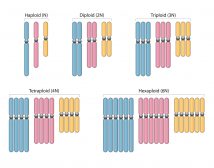
Polyploidy
Humans are diploid creatures. This means that for every chromosome in the body, there is another one to match it. Howeve..

Human Reproduction
Humans are capable of only one mode of reproduction, i.e. sexual reproduction. Haploid sex cells (gametes) are produced ..

Protein Synthesis
Part of the genetic information is devoted to the synthesis of proteins. mRNA, a type of RNA, is produced as a transcri..
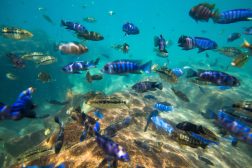
Still Water Animals
Animals living in aquatic habitats have diversified and evolved through time. They eventually occupy ecological niches a..

Photosynthesis – Photolysis and Carbon Fixation
Photosynthesis is the process that plants undertake to create organic materials from carbon dioxide and water, with the ..
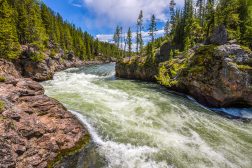
Running Water Freshwater Communities
This tutorial introduces flowing water communities, which bring new and dithering factors into the equation for possible..
